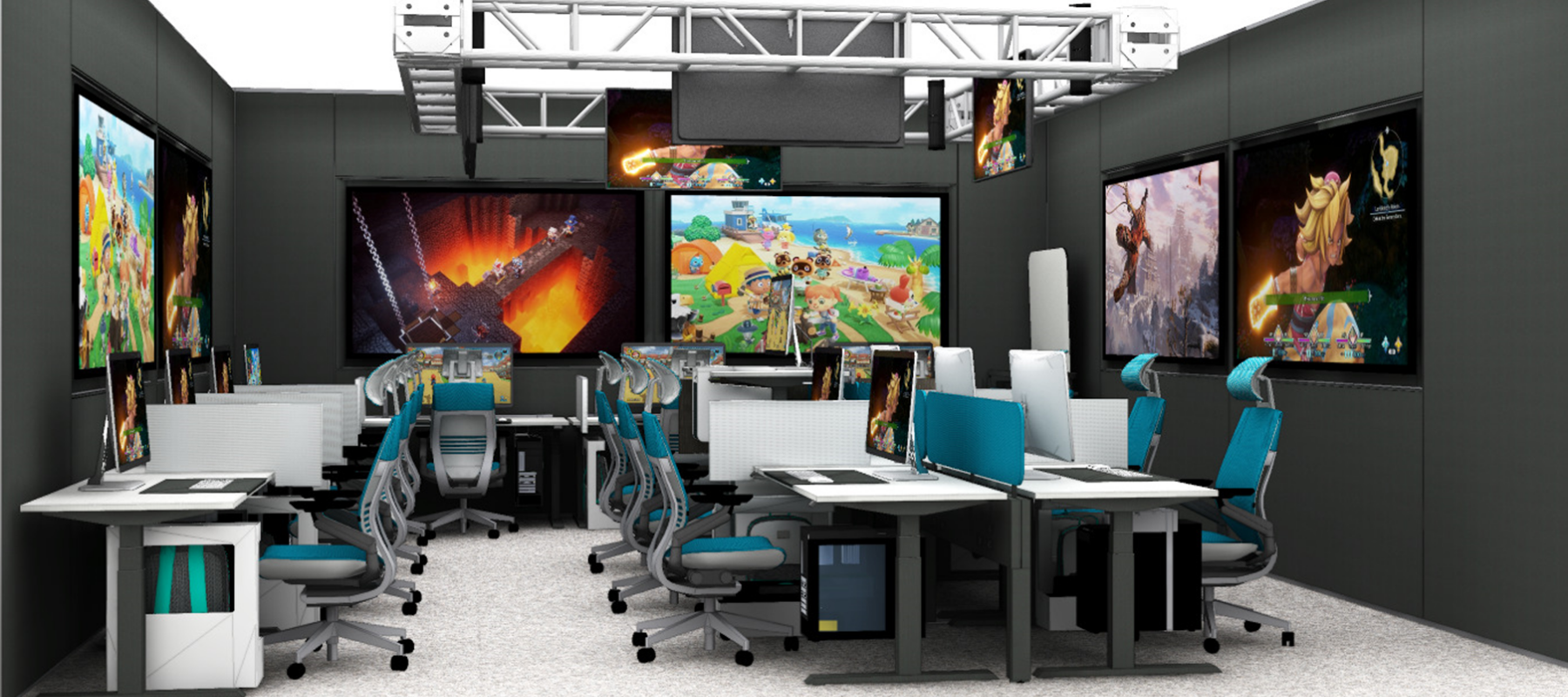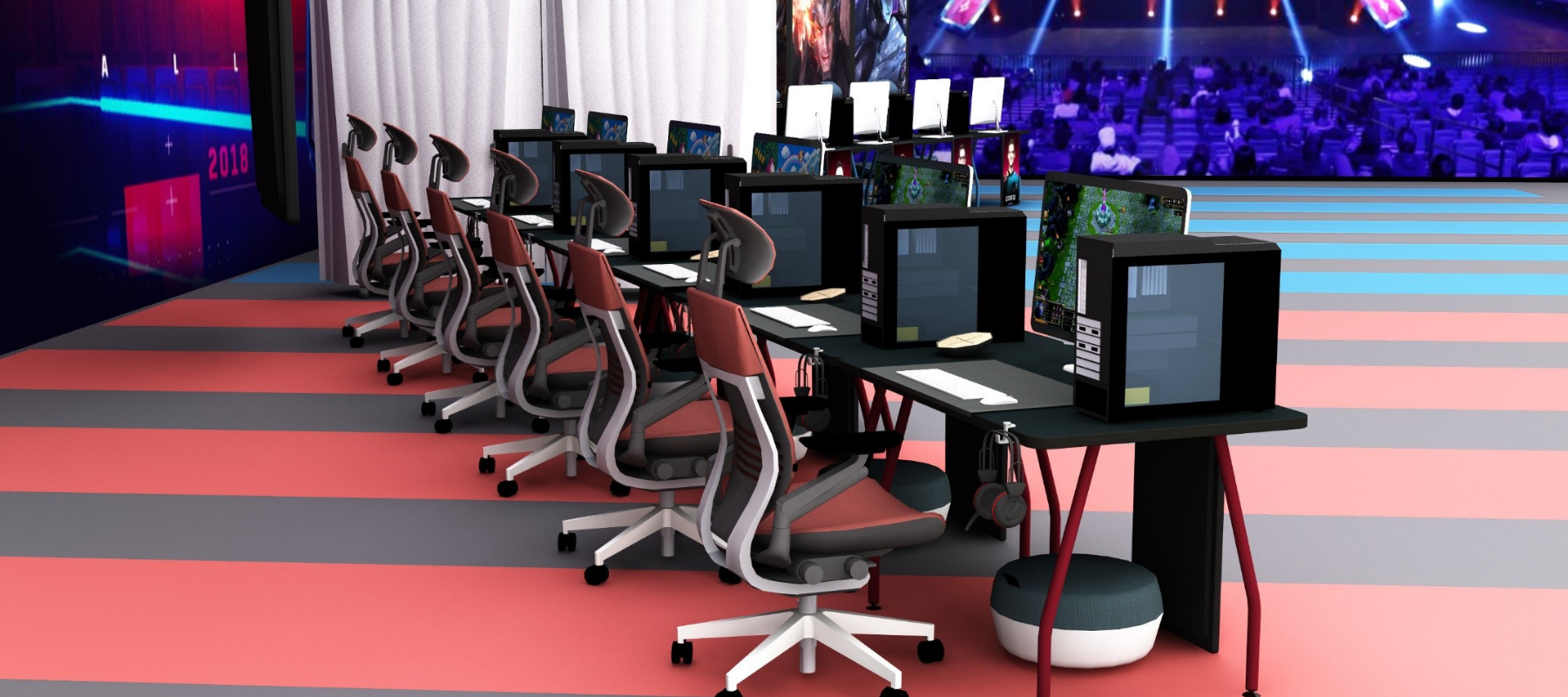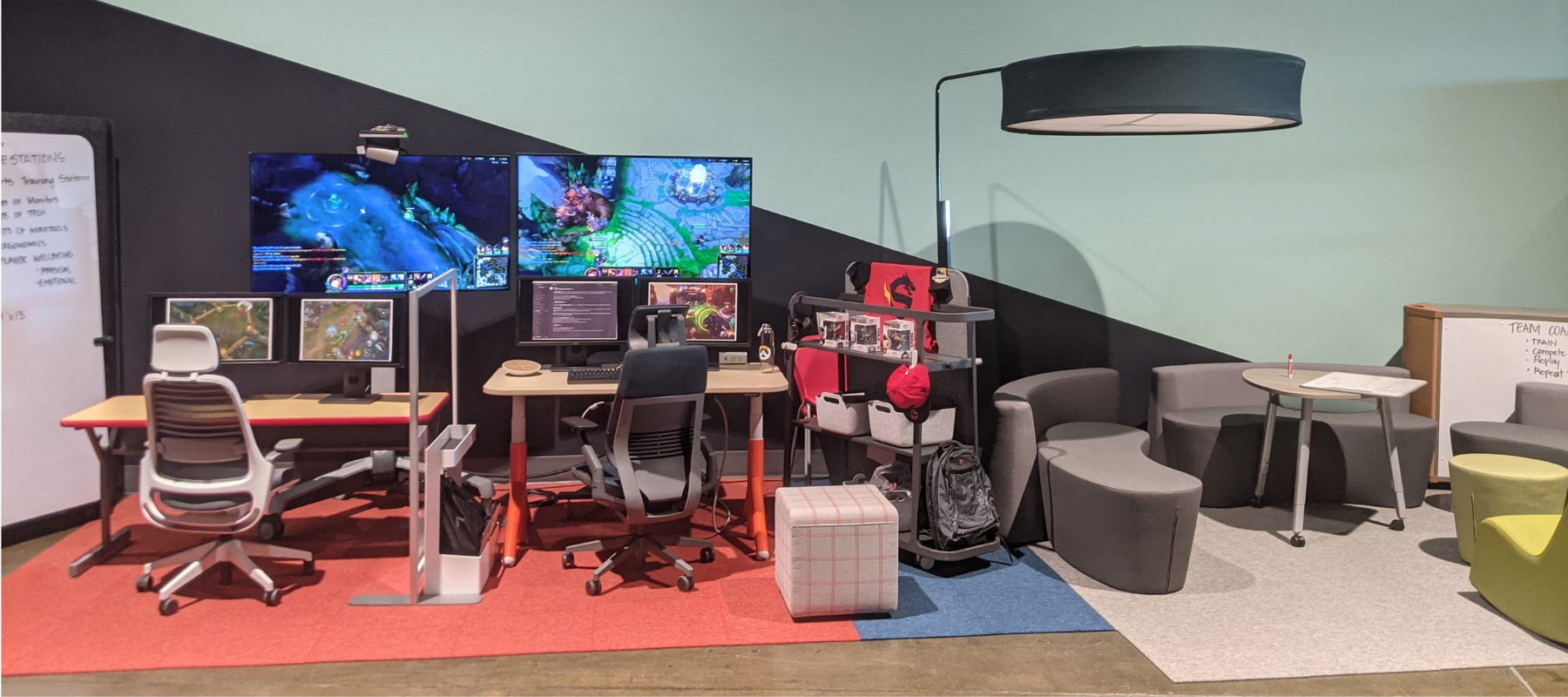
As schools look to attract new students and provide engaging opportunities for those not typically participating in traditional athletics or clubs, they might consider the ever-expanding world of esports. The world of competitive video gaming is a fast-growing international phenomenon with millions of fans and participants.
Research shows that participation in school activities improves student performance and overall wellbeing. Schools, therefore, should invest in a wide range of activities that appeal and engage as many students and possible. Esports are a way for students to build confidence for those who might otherwise be disengaged from the school community. Esports build many of the same skills as traditional team sports, offering lessons learned beyond the classroom including valuable social skills and collaboration.
As esports programs gain momentum, broader design strategies are coming into focus as schools realize that an elevated experience requires more than just giving gamers a supportive chair. It also means considering a facility plan that includes a range of performance-focused spaces for players, as well as appealing environments for spectators and fans.
It starts with the chair

In the heat of the battle, esports gamers typically sit for hours; there’s no grabbing a coffee, no stand-up stretches, no getaway strolls. That’s why, whatever a school’s commitment is to esports, the chair is of paramount importance. Alertness and concentration are essential for gamers. And few things can be more distracting than the discomfort that comes from long bouts of sitting. Unfortunately, however, most so-called gaming chairs offer more in the way of surface pizzaz rather than the hard-working performance that gamers require to be their best.
Chairs with headrests generally offer the most support for gamers. But not all chairs are created equal. Often, the flashiest designs maybe give a great ‘esport aesthetic’ but are uncomfortable and lack proper ergonomic design.
Chairs designed for performance such as the Steelcase Gesture offer support for the widest range of users. Inspired by the movement of the human body, Gesture is the first task chair designed to support our interactions with today’s technologies. The Gesture 360 arm moves like the human arm, which allows users to be supported in any position. Arms and shoulders remain supported when gaming. Gesture supports the greatest range of postures in three ways: through the back, the seat and the arms. With 3D LiveBack, Gesture mimics the natural motion of the spine contouring to the user, creating the deepest recline.
More Than a Game

As with any athletic sport, schools embracing esports and sponsoring teams can attract competitive gamers looking for the opportunity to further flex and hone their skills while in school. At the same time, on-campus gaming opportunities can engage students who might not otherwise participate in extracurricular activities, helping them find “their people” and build strong personal connections that over time can be the difference between a positive and negative experience at school.
Well designed esports spaces can enhance gamer performance by celebrating team culture and encouraging collaboration and gamer wellbeing. Just as important as the space where students compete are spaces designed to provide respite and decompression between competitions. Esports is also a growing spectator sport, so designing observation zones where spectators can comfortably watch without distracting competitors is key.
Whether you have over 10,000 square feet or as little as 1,000, designing with these considerations in mind can result in an impressive and hardworking esports center that ups the game and increases opportunities for students to make the connections that are critical for their success.
